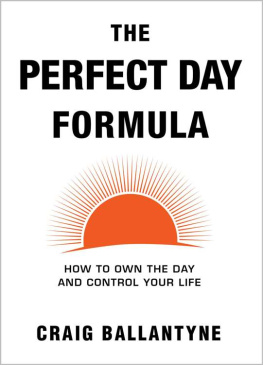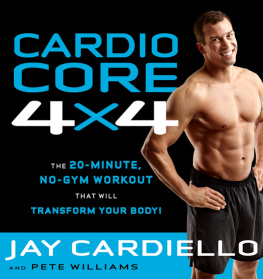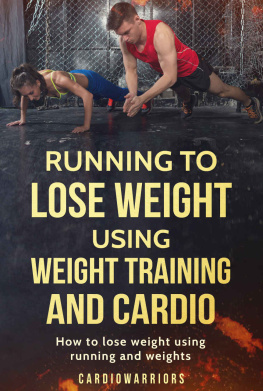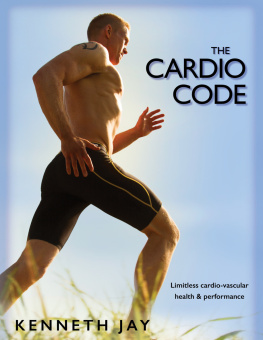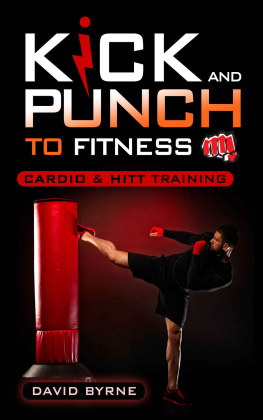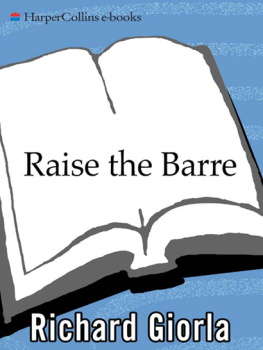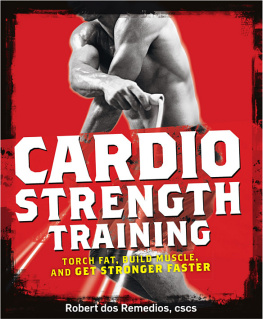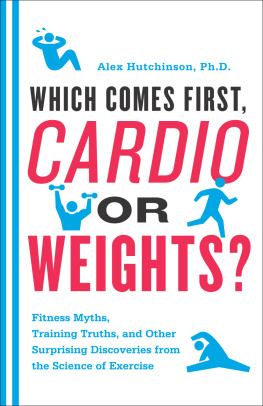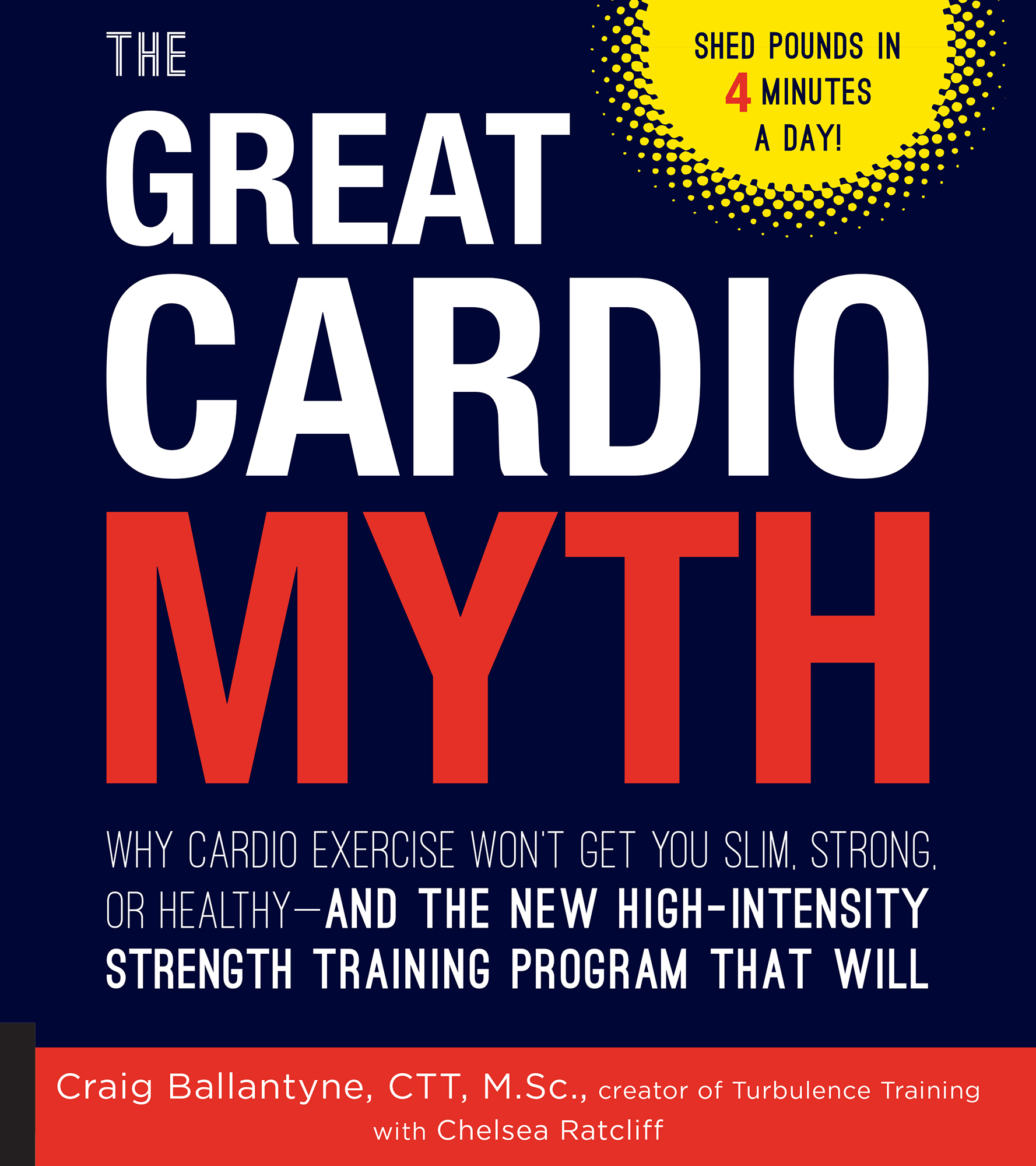THE
GREAT
CARDIO
MYTH
WHY CARDIO EXERCISE WONT GET YOU SLIM, STRONG, OR HEALTHYAND THE NEW HIGH-INTENSITY STRENGTH TRAINING PROGRAM THAT WILL
Craig Ballantyne, CTT, M.Sc.,
creator of Turbulence Training with Chelsea Ratcliff

FOREWORD
I F YOUVE EVER had the feeling you were wasting your time if you ever felt like going to the gym was just a big joke on you if you ever looked in the mirror and thought with despair, What the heck was the point of the forty hours I spent on the treadmill over the last three months? Prepare to be enlightened about cardio exercise.
Youll see how giving up cardioand taking a little-known but faster pathcan not only help you achieve your fat loss goals but also improve your health in a number of ways.
Despite weight loss being the number one goal of most people who join a gym, creating exercise programs to help people lose belly fat is actually a new concept. To be honest, it simply wasn't needed in the past. People were more active and, overall, moved more than they do today.
Today, in an almost completely automated time-crunched society, we, as exercise professionals, have had to create exercise programs specifically to induce fat loss. Designing exercise specifically for fat loss has led to a number of trial-and-error theories, methods, and concepts that, in the end, have been unsuccessful.
As a fitness industry we have failed miserably.
We originally designed fat loss programs by copying what endurance athletes were doing and hoping that, somehow, the training program of a marathon runner would work for fat losseven when we cut it down to twenty minutes, three times per week. But fat loss was never the goal of endurance athletesit was a side effect. Standing at the finish line of any marathon youll see bodies of all shapes and sizes able to cross, proving that running a marathon doesnt always equal fat loss.
Fitness experts also turned to bodybuilding for ideas about fat loss. This was in the 1980s when physique transformation contests became so popular. Average people underwent strenuous bodybuilding regimens to produce startling changes in their appearance la Arnold Schwarzenegger. But to take the programs of full-time bodybuilders and use them to model fat loss programs for the general population was nonsensical, and, perhaps, not the healthiest.
But we tried.
And the nutritional supplement companies jumped right on board to try to convince us that taking Brand X powders, pills, and shakes would provide the same benefits as the drugs that bodybuilders were using.
We failed again. Rates of obesity remained high and overall fitness levels were not improving. Cardiovascular diseases were not declining at nearly the rate it seemed they should.
But we were getting closer. Fat loss was indeed a goal for bodybuilders, but the low levels of body fat percentage a contest bodybuilder achieved was a result of increased muscle mass and, therefore, metabolism (and training programs several hours in length per day)not from lots of steady-state cardio.
With the simplicity of an aerobic workout, and the media hype surrounding it, many people, instead, turned to cardio to try to improve their fitness and lose weight.
Then we discovered the truth: Aerobic work really doesn't do much for fat loss. Scientific study after scientific study shows little to no fat loss with aerobic programs.
Steady-state aerobic exercise for fat loss might be the biggest lie ever told in the fitness industry. Cardio work can improve cardiovascular fitness, and fit athletes tend to be lean. But even though there was a correlation between cardiovascular fitness and leanness, there was never cause and effect. Adding cardio exerciseparticularly aerobic workdoesnt translate to any meaningful fat loss results.
A 1998 study showed that the addition of forty-five minutes of aerobic exercise at 78 percent max heart rate five days a week for twelve weeks had no effect over dieting alone.
A 2007 study looked at a six-month period of time with two groups: diet only versus diet plus aerobic exercise (this time for fifty minutes, five days per week). This study concluded there is no additional effect of aerobic exercise on body composition.
And another 2007 study looked at an even longer durationtwelve months. In addition, there was a longer workout periodsixty minutes instead of forty-five or fiftyand an extra day per week (six days as opposed to five).
This time, though, the program workedsort of.
The average fat loss for the year was around a measly three and a half pounds (1.6 kg).
As youll see in these and other studies covered in this book, aerobics for fat loss is not an effective use of time.
This is where Craig Ballantyne comes in. Craig has the scientific background to actually dig deep into the research and look at what worked and what didnt. Craig also walks the walk (or in his case, sprints the sprint) and is a real-world practitioner, training real people and getting them to see real results that match what scientists have achieved in the exercise labs. Over the last fifteen-plus years, Craig has refined and developed a fat loss methodology featured in dozens of magazines all over the world.
Hes about to show you a more modern and feasible exercise path to disease prevention, functional fitness, and improved well-beingthe health benefits we were once told we could only get through hours of cardio.
Even though we are fitness experts and gym owners and have written six books on exercise, we still learn something from Craig every time we speak with him. Hes not only a walking, talking billboard for his methods, hes also a truth-telling inspiration to millions and youre about to get his latest secrets, along with a guided tour of the research that reveals why they work.
Alwyn and Rachel Cosgrove, Results Fitness
INTRODUCTION
I HAVE AN EMBARRASSING story to tell you. In my second year of college, I fell for the cardio mythhook, line, and sinker. I was already a young, strong athlete on a competitive soccer team, but I thought adding more cardio to my training would help me get ripped and improve my fitness; instead it turned me from a 180-pound (81.5 kg) muscular young man into a 160-pound (72.5 kg) sand-kicked-in-my-face weakling suffering from overuse injuries.
At first I was confused. Werent all these miles logged on the road supposed to give me six-pack abs and get me in peak shape?
Fortunately, that mistake lasted just one summer. The next year at school, I rebuilt my fitness-model body with strength training. I got leaner, stronger, and more attractive.
You might even say I got smarter because this lesson inspired me to earn a graduate degree in exercise science at McMaster University in Hamilton, Ontario. I wanted to understand why and how exercise led to optimal health. Yes, health, because having too much body fat and too little muscle are obviously not just a matter of looks. An overly fat, flabby physique links to myriad health risksfrom heart disease to diabetes to osteoporosis and injuries.
As I started to examine the effects of exercise, I realized how complex the science behind it was and how detrimental some common assumptions about cardio might be, not just for athletes, but for the general public, as well.
In 1999, the year before I graduated, I developed my own training program based on the research coming out at the time, combined with my own experience. I called it Turbulence Training (youll see why in ). Ive spent the last two decades continuing to study exercise myths and scientifically proven breakthroughs, thus helping hundreds of thousands of men and women kick cardio to the curb for good and sculpt a slimmer, sexier body with short burst exercise sessions.


